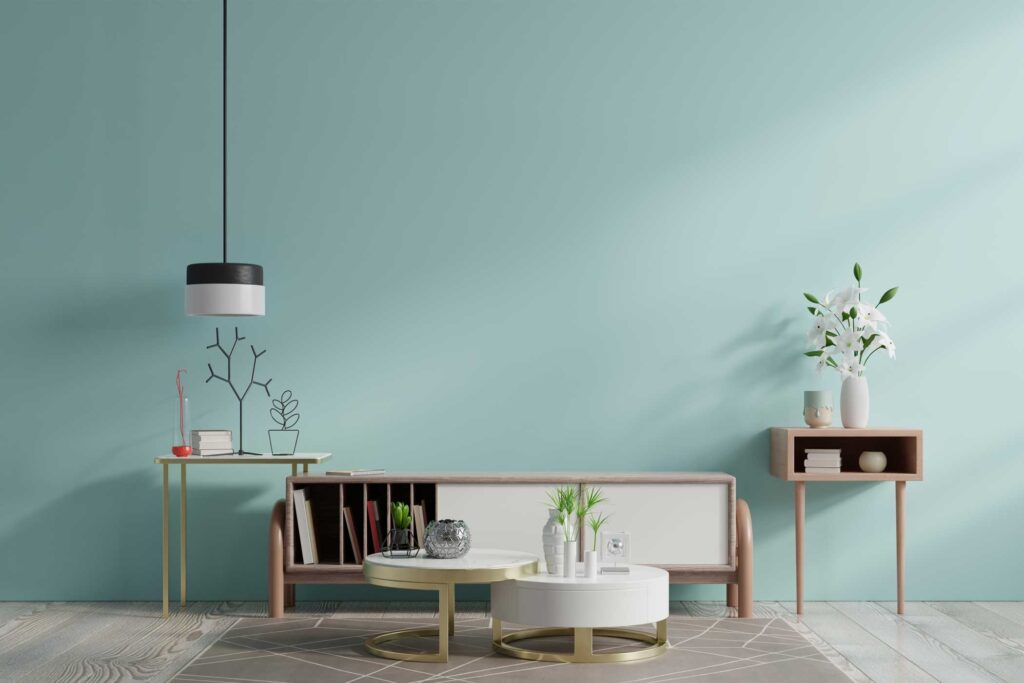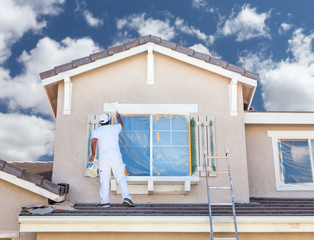Residential painting involves the interior and exterior of a homeowner’s home. It’s an art form that requires attention to detail and the ability to communicate with homeowners about color and design preferences.
Bunbury Painting Service uses top-rated paints to ensure the results last longer and look better than cheaper alternatives. They also take the time to mask any areas that must be painted properly.

Choosing the right paint is an important step in residential painting. The right paint brand will make your project easier and more efficient, and it will also ensure a high-quality finish that lasts for years to come. The most popular brands include Sherwin-Williams, Benjamin Moore, and Valspar. These brands offer various colors and finishes that work well on any surface. Moreover, they are highly durable and stain-resistant. They are also easy to clean and apply.
Behr is a budget-friendly brand that offers a wide selection of color options and can be found at most home renovation stores. It also has several features that make it useful for professional painting tasks, including seamless blending for touch-ups and quick drying.
Sherwin-Williams is one of the leading painting brands in the world and a trusted choice for professional painters. Its eco-friendly paints are free of odor and VOC, and it has a long list of available colors to suit any project. It also offers a wide range of textures to choose from.
Valspar is another brand that is trusted by professionals and is known for its stain resistance and durability. Its One Coat line is a great option for repainting existing light-colored surfaces because it hides stains quickly and requires fewer coats than other paints. In addition, the company’s mold-killing primer is an excellent choice for drastic color transitions and smoke or water damage.
Residential painting is applying paint to the walls, ceilings, and other surfaces inside a house. The job is generally completed by professional painters with experience choosing different paints and techniques. They also know about various color palettes and can help you select the best colors for your home. They can also advise you on the proper surface preparation for each area of your home.
Before beginning a residential painting project, it’s important to protect your furniture, floors, and electronic equipment from rogue paint drops. The best way to do this is by moving your belongings out of the rooms that will be painted, but if you cannot move them, cover them with old blankets and drop cloths. Also, disconnect all electrical outlets and light switches before starting the work. Lastly, it’s a good idea to cover your doorknobs with plastic bags to prevent them from being damaged by the paint.
In addition to their skills with brushes and rollers, residential painters are also trained in communicating with homeowners and protecting their belongings during the painting process. They are also familiar with the unique needs of working in homes, including avoiding disrupting family life and privacy while the renovation work is ongoing.
Commercial painting involves renovating larger structures, such as schools, offices, hospitals, and retail buildings. These projects require a greater focus on productivity and efficiency than residential painting, as delays could result in significant losses for the company. Commercial painters are skilled in planning and scheduling their work, and they are often required to work with other professionals on large-scale projects.
Both residential and commercial painters need to be comfortable working with various materials, including wood, vinyl, and aluminum siding. They must also be capable of meeting strict deadlines and adhering to safety regulations. In addition, commercial painters may need to be trained in a specific type of material or technique, such as stenciling. They may also need access to specialty tools, such as power washing equipment and cranes.
A fresh coat of paint can revitalize any room and give the space a new look. While some painting projects require professional skills, there are many wall painting techniques that homeowners can learn that will make the project easier and more enjoyable.
Painting professionals use a variety of painting techniques to create various effects. They may start with a base coat to help the paint adhere to the surface, then apply glaze for added texture or color. They also blend colors to ensure consistency. Homeowners can use the same techniques when working on a smaller project, such as painting over wallpaper or changing a room’s accent color.
One way to add a unique touch to a wall is to stencil letters or shapes with a brush. This wall painting technique is easy and can create a dramatic effect. It is also a good way to approximate the appearance of wainscoting without the cost and mess of installing it.
Stenciling requires practice, so it’s a good idea to practice on a piece of cardboard first. You can also purchase letter stencils to make the process even easier. It’s important to choose high-quality stencils to ensure that they won’t chip or peel easily.
To achieve a smooth and even finish, some people sand the walls before painting. This is especially true for rougher surfaces, such as brick or stucco. However, sanding is only necessary for some surfaces and can be difficult. When sanding, you should use fine-grit sandpaper and follow the manufacturer’s instructions for application.
Homeowners can prevent uneven surfaces from causing problems later by applying a primer. This can help the top coat of paint adhere better and also help cover any bumps or ridges on the wall. It is important to clean and prep the wall before applying primer, however, to make sure it’s free of dirt, oil, and other debris.
Another important tip for home painting is to test the shade in a small room area before beginning. Sunlight and different light bulbs can alter how a shade looks, so it’s a good idea to test it in a spot that will be similar to the rest of the room.
As many homeowners know, deciding on the paint color is just one part of the home painting process. Choosing the right finish for the job is important and can improve the overall results. It’s a step that many homeowners neglect to consider, but it is essential for the long-term durability and protection of your surfaces. Learn more about the different sheens and finishes to choose the best option for your next project.
Paint sheens have a major impact on both the appearance and functionality of your rooms. The sheen level affects how the color reflects light and what kind of mood is set in your space. It also impacts the durability and moisture resistance. Choosing the right sheen for your home can save you time and money in the long run, as well as help you keep up with your maintenance.
The most popular interior paint sheens are flat/matte, eggshell, satin, and semi-gloss or high-gloss. While each has a different level of shine and reflects light differently, they all provide durability and protection for your walls.
Flat paint is the most matte and least reflective of the sheen options available. It provides good coverage, making it ideal for covering blemishes on walls or surfaces that might not otherwise be ready to be painted. However, it could be more durable and withstand moisture well. It may require frequent touch-ups and is not suitable for areas of the home that experience high traffic or children’s playrooms.
Eggshell is a bit more shiny than flat paint but still has a smooth, soft feel. It can withstand moderate wear and tear and is a good choice for gathering spaces, foyers, and hallways. It’s easy to clean and can withstand some moisture, but it does show more imperfections than satin.
Satin is more glossy than eggshell but less shiny than high-gloss. It’s a good choice for rooms that get medium use, such as kitchens and dining rooms. It’s easy to clean and stains well, but it shows more imperfections than satin.









